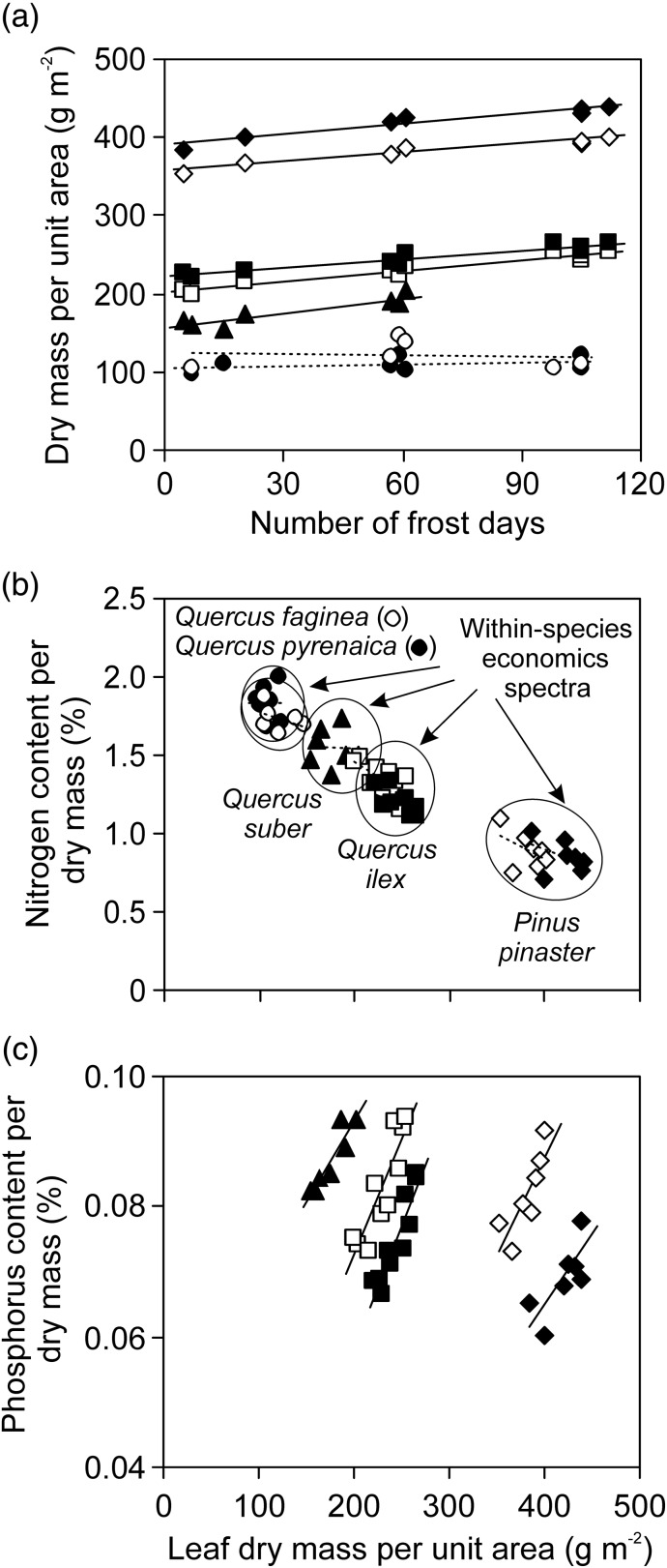Figure 1.
Leaf dry mass per unit area in relation to the number of frost days (a), and correlations of leaf nitrogen (b) and phosphorus (c) content per dry mass with leaf dry mass per unit area in two deciduous (Quercus faginea Lam. and Q. pyrenaica Willd.) and three evergreen (Q. suber L., Q. ilex L. and Pinus pinaster Aiton) Mediterranean species (data from González-Zurdo et al. 2016 in this issue of Tree Physiology). Data were fitted by linear regressions and solid lines correspond to statistically significant and punctuated lines to nonsignificant relationships (see González-Zurdo et al. 2016 for details). In evergreen species Q. ilex and P. pinaster, open symbols correspond to current-year leaves and filled symbols to 1-year-old leaves. Ellipses in (b) emphasize that within the broad nitrogen content vs leaf dry mass per unit area relationship observed across the species, there is a within-species economics spectrum driven by acclimation to cold temperatures (a). In the case of phosphorus content vs leaf dry mass per unit area relationship, significant within-species relationships are observed, while the broad trend collapses (c).

